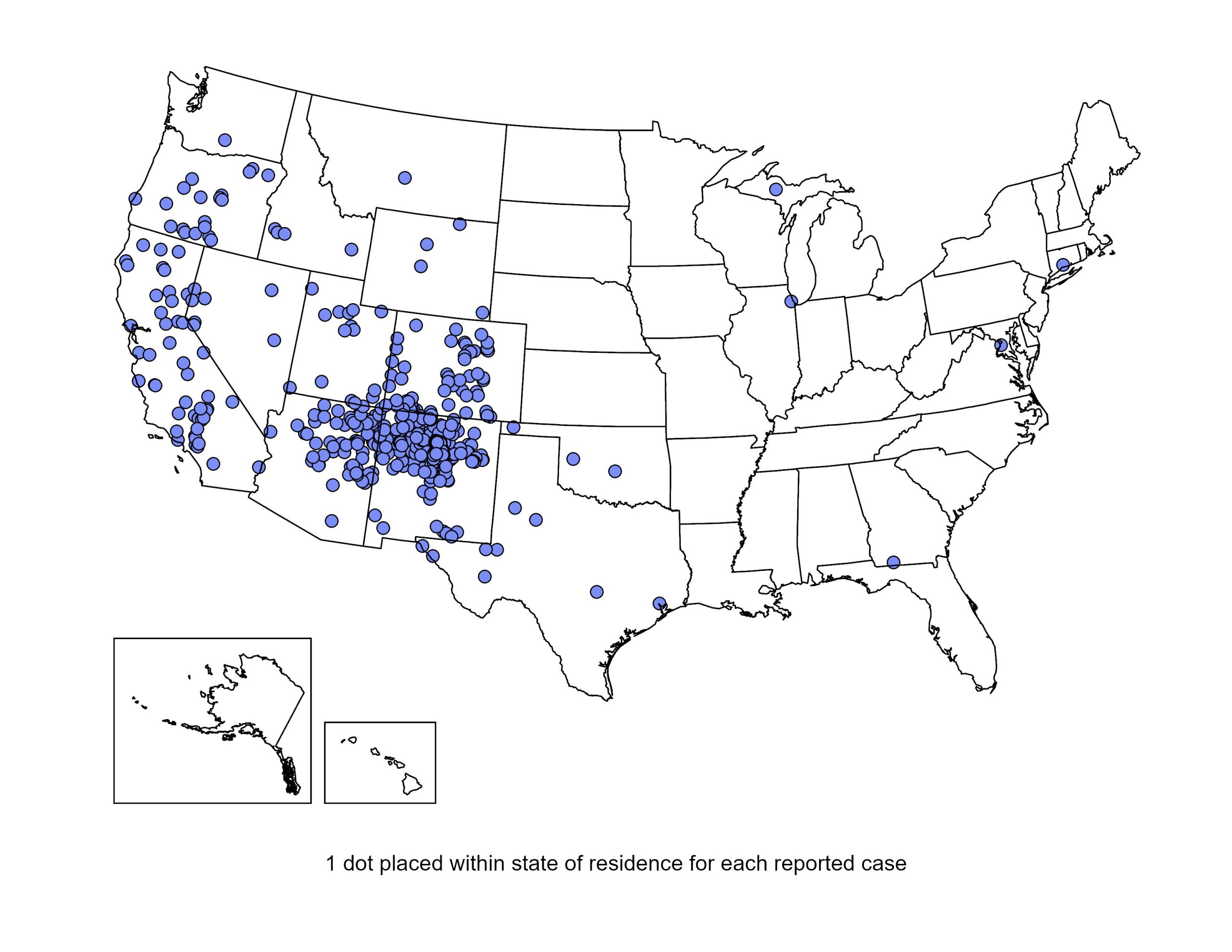Health officials in Colorado are investigating a human case of the bubonic plague confirmed in a person in Pueblo County, the Department of Public Health and Environment said in a news release.
The case was first reported Friday and preliminary test results indicated the bacteria's presence.
Although the plague is best known for “The Black Death,” an outbreak that killed millions in Europe, the Middle East and northern Africa during the Middle Ages, the bacteria circulates naturally among wild rodents and in rare cases infects humans and their pets, according to the U.S. Centers for Disease Control and Prevention.
The last urban plague epidemic in the United States occurred in Los Angeles from 1924 through 1925. Since that time, plague has occurred as scattered cases in rural areas. Most human cases in the United States have occurred in outbreaks in California, New Mexico, Oregon, Idaho, Nevada, Utah, Arizona, Colorado, Texas, and Oklahoma.
Get top local stories in Southern California delivered to you every morning. Sign up for NBC LA's News Headlines newsletter.

People get plague from bites of infected fleas, by touching or skinning infected animals, or inhaling droplets from the cough of an infected person or animal.
Here's what to know about the bubonic plague:
U.S. & World
News from around the country and around the globe
What is plague?
Plague is an infectious disease that can affect mammals. It’s caused by the bacterium Yersinia pestis, which is carried by rodents and fleas. Sunlight and drying can kill plague bacteria on surfaces, according to the CDC. Humans and pets suspected to be sick with plague are typically treated with antibiotics, and sometimes with other medical measures.
Plague symptoms can manifest in a few ways. Bubonic plague — the kind contracted by the Colorado resident — happens when the plague bacteria gets into the lymph nodes. It can cause fever, headache, weakness and painful, swollen lymph nodes. It usually happens from the bite of an infected flea, according to the CDC.
Septicemic plague symptoms happen if the bacteria gets into the bloodstream. It can occur initially or after bubonic plague goes untreated. This form of plague causes the same fever, chills and weakness, as well as abdominal pain, shock and sometimes other symptoms like bleeding into the skin and blackened fingers, toes or the nose. The CDC says this form comes from flea bites or from handling an infected animal.
Pneumonic plague is the most serious form of the disease, and it occurs when the bacteria gets into the lungs. Pneumonic plague adds rapidly developing pneumonia to the list of plague symptoms. It is the only form of plague that can be spread from person to person by inhaling infectious droplets.
All forms of plague are treatable with common antibiotics, and people who seek treatment early have a better chance of a full recovery, according to the CDC.
Am I at risk of plague?
In the U.S., an average of 7 cases of human plague is reported each year, according to the CDC, and about 80% of them are the bubonic form of the disease. Most of those cases were in the rural western and southwestern U.S.
A welder in central Oregon contracted it in 2012 when he pulled a rodent out of his choking cat’s mouth in 2012 — he survived but lost his fingertips and toes to the disease. A Colorado teen contracted a fatal case while hunting in 2015, and Colorado officials confirmed at least two cases last year — one of them fatal.
Worldwide, most human cases of plague in recent decades have occurred in people living in rural towns and villages in Africa, particularly in Madagascar and Congo, according to the Cleveland Clinic.
People can reduce the risk of plague by keeping their homes and outdoor living areas less inviting for rodents by clearing brush and junk piles and keeping pet food inaccessible. Ground squirrels, chipmunks and wood rats can carry plague as well as other rodents, and so people with bird and squirrel feeders may want to consider the risks if they live in areas with a plague outbreak.
The CDC says repellent with DEET can also help protect people from rodent fleas when camping or working outdoors.
Flea control products can help keep fleas from infecting household pets. If a pet gets sick, they should be taken to a vet as soon as possible, according to the CDC.
Isn’t plague from the Middle Ages?
The Black Death in the 14th century was perhaps the most infamous plague epidemic, killing up to half of the population as it spread through Europe, the Middle East and northern Africa. It began devastating communities in the Middle East and Europe between 1347 and 1351, and significant outbreaks continued for roughly the next 400 years.
An earlier major plague pandemic, dubbed the Justinian plague, started in Rome around 541 and continued to erupt for the next couple hundred years.
The third major plague pandemic started in the Yunnan region of China in the mid-1800s and spread along trade routes, arriving in Hong Kong and Bombay about 40 years later. It eventually reached every continent except Antarctica, according to the Cleveland Clinic, and is estimated to have killed roughly 12 million people in China and India alone.
In the late 1800s, an effective treatment with an antiserum was developed. That treatment was later replaced by even more effective antibiotics a few decades later.
Though plague remains a serious illness, antibiotic and supportive therapy is effective for even the most dangerous pneumonic form when patients are treated in time, according to the World Health Organization.



